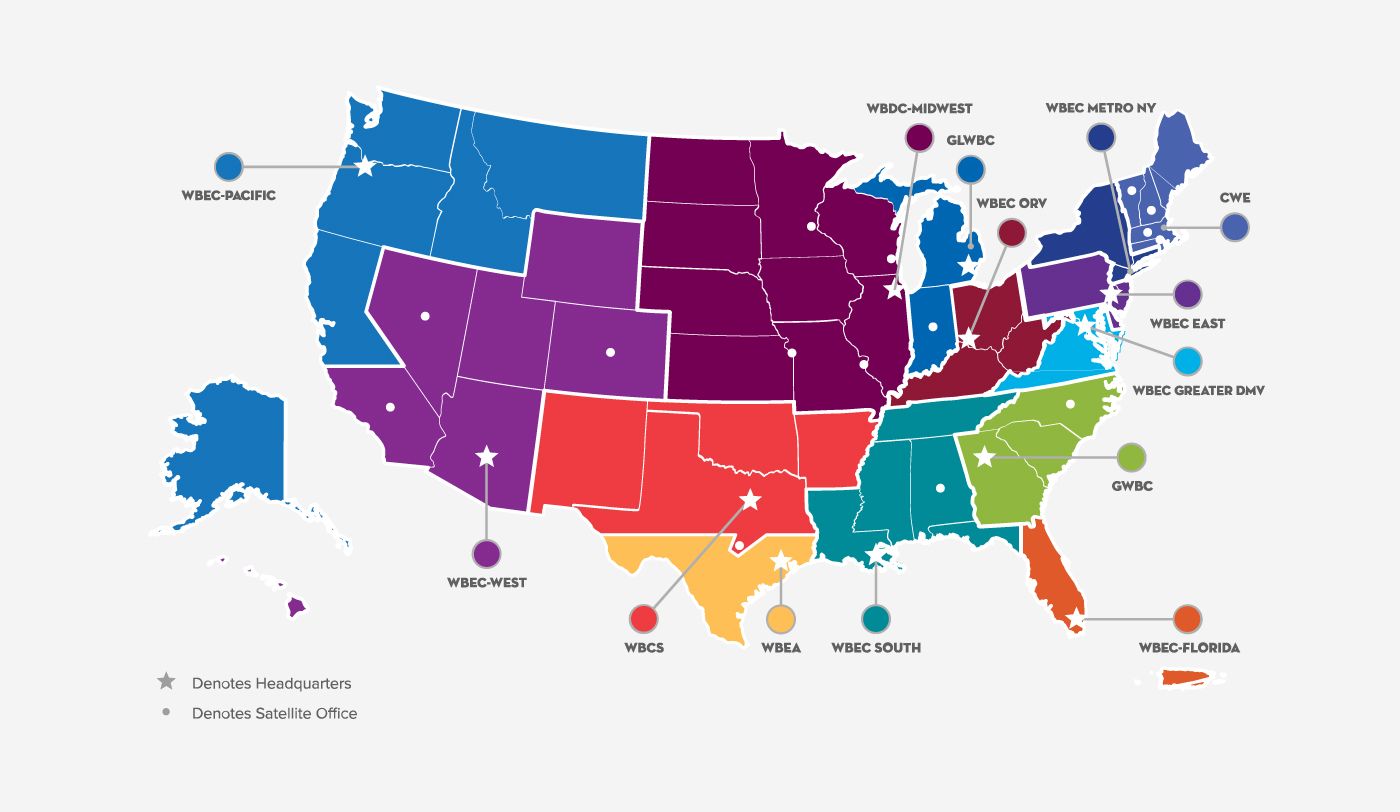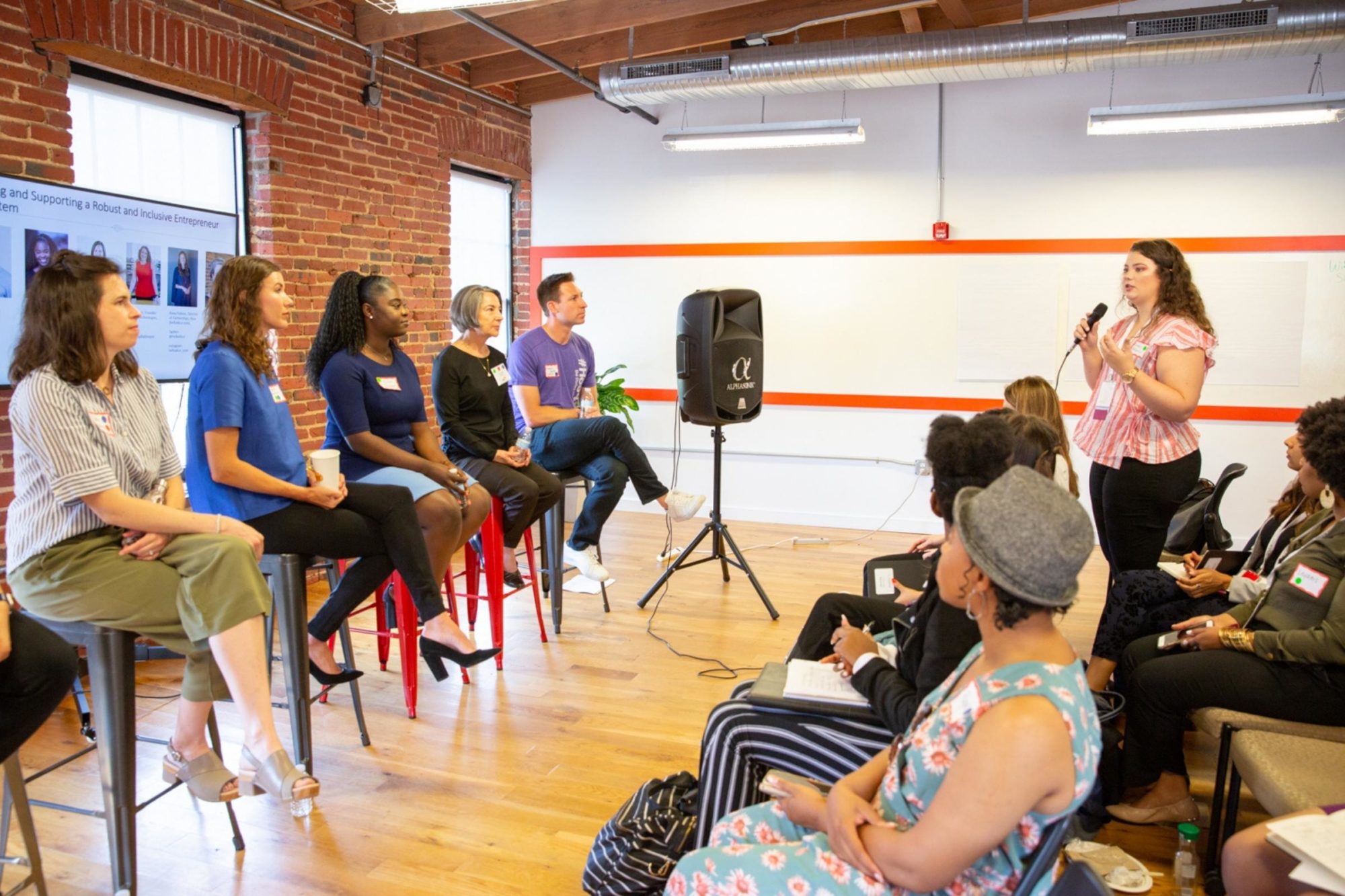Natalie Keng, CEO & Founder of Chinese Southern Belle, is “cooking up a better world” and opening minds one mouth at a time. Read why she thinks food can be the catalyst for acceptance of diversity. Plus — a stir fry recipe!
During Asian American and Pacific Islander Heritage Month, WBENC is celebrating the immense contributions Asian American and Pacific Islander women entrepreneurs have made to our nation and the WBENC network. Check back for more AAPI Spotlight posts this month, brought to you by the WBENC Women of Color Program. We invite you to champion and uplift AAPI voices with us this month.
Can food be the catalyst for acceptance of diversity and a greater understanding between races? I’ve spent my adult life trying to prove this true; my story-telling and cooking demonstrations are also a journal of my journey.
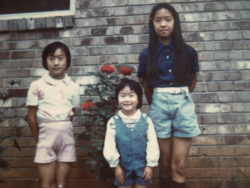 As the third daughter (considered unlucky in a Chinese family), I consider myself lucky to be born closer to Canton, Georgia than Canton, China. My parents immigrated to Atlanta in the 1960s on graduate school scholarships. In our first house, we found pro-segregation campaign posters for the governor’s race, but as the only Asian family in the neighborhood, my sisters and I learned quickly about “being different.” We attended football pep rallies and played PacMan, but were fined a dime for every English word we spoke at home. When we were young, our relatives teased us and called us “banana” kids: yellow (Asian) on the outside, white (American) on the inside. In fact, there was a dissonance in my experience growing up within two cultures that I didn’t fully recognize or deal with until college.
As the third daughter (considered unlucky in a Chinese family), I consider myself lucky to be born closer to Canton, Georgia than Canton, China. My parents immigrated to Atlanta in the 1960s on graduate school scholarships. In our first house, we found pro-segregation campaign posters for the governor’s race, but as the only Asian family in the neighborhood, my sisters and I learned quickly about “being different.” We attended football pep rallies and played PacMan, but were fined a dime for every English word we spoke at home. When we were young, our relatives teased us and called us “banana” kids: yellow (Asian) on the outside, white (American) on the inside. In fact, there was a dissonance in my experience growing up within two cultures that I didn’t fully recognize or deal with until college.
The kitchen was where my mother reigned and where we Southern Chinese American kids learned a lot about both pride and getting along. She used a term to put us in place during dinnertime—“Eat better!” she would warn, meaning be quiet, get serious, get along, count your blessings, and don’t make trouble. There was no chance to be a rebel at our dinner table.
Meanwhile, my mother whipped up amazing stir fries and country Asian creations, such as Hot Hunan Catfish and Five-Spice Rutabaga, prepared in a blazing hot cast-iron skillet—perhaps not realizing how similar these tastes were to Southern folk. But, when we ate out, we preferred hamburgers and barbecue. My dad loves Chinese porridge with a Thousand-Year egg cut up in it and fermented bean curd on the side, but in our Chinese take-out restaurant in Atlanta he also served fried chicken wings, because he loved them.
Between the worlds of egg rolls and fried chicken, I grew up feeling right at home.
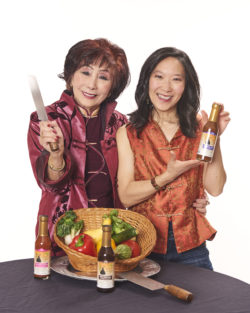 Understand, I didn’t choose to turn my back on my race in order to blend in; my love for life in the South, as well as my love of Chinese family, fueled real life experiences that help me to find a balance between the two. I keep coming back to the food and the table that brings us together. Through food, I’ve found comfort. With others, I love making connections and breaking through our shared fears and stereotypes by discovering culturally compatible tastes. Yes, I respect, honor, and remember the origins of the Chinese food I grew up eating, but I also believe in allowing ourselves—and our recipes—to evolve.
Understand, I didn’t choose to turn my back on my race in order to blend in; my love for life in the South, as well as my love of Chinese family, fueled real life experiences that help me to find a balance between the two. I keep coming back to the food and the table that brings us together. Through food, I’ve found comfort. With others, I love making connections and breaking through our shared fears and stereotypes by discovering culturally compatible tastes. Yes, I respect, honor, and remember the origins of the Chinese food I grew up eating, but I also believe in allowing ourselves—and our recipes—to evolve.
At this time in our country, Chinese immigrants, as well as long-time citizens, are being shamed and canceled for China’s supposed part in spreading COVID-19. When these types of fear-based beliefs fuel the fire of hatred against people, facts are not what calm them. In teaching diversity classes, I often use my family stories of how one Asian American family adapted to the ways of the Deep South; and how our food has served as a cultural gateway and a political olive branch, to help break down barriers and stereotypes around the unfamiliar, and focus on the values we all hold dear—good food, good health, and community. I say this at every speaking engagement, cooking video, and diversity seminar I lead:
From urban food deserts to state dinners, I believe with all my heart that the experience of breaking bread—or challah, injeera, or bahn mi—together is the starting point, and best hope for achieving healthy, livable, sustainable communities.
The dining table is a special, sacred place where we can enjoy and learn to agree or disagree, without politics. We don’t have to be color blind to be curious, open, and continue to challenge ourselves, whether it concerns eating new foods, or simply hearing about our shared comfort zones.
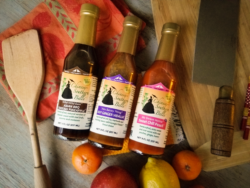 The stories behind my recipes and shared in presentations and cooking demos are the unseen ingredients I love the most; I offer them for your enjoyment, and as a bridge to connect all of our best food experiences. Will there ever be a time when food is just food? Probably not. Will there be a time when we are a colorblind society? I hope not, although I strive for harmony. Diversity, after all, is the ingredient that makes our country great. No blending required.
The stories behind my recipes and shared in presentations and cooking demos are the unseen ingredients I love the most; I offer them for your enjoyment, and as a bridge to connect all of our best food experiences. Will there ever be a time when food is just food? Probably not. Will there be a time when we are a colorblind society? I hope not, although I strive for harmony. Diversity, after all, is the ingredient that makes our country great. No blending required.
Stir Fried America (Mom’s 1-Minute Stir Fry)
More than anything else, a stir fry captures the quintessential spirit and technique of Chinese cuisine. Fast, healthy, and versatile, stir fry highlights both creativity and comfort in ingredients, sauces, and seasonings. I think a stir fry is similar to a jambalaya, where all the ingredients stand on their own, but come together as one scrumptious dish—this is the best example of the “melting pot” of America! Like a stir fry, the sum of we as a people is greater than the individual ingredient. In this simple dish, ingredients like the carrot or onion impart their own texture and flavor, but blend beautifully as part of the dish.
A stir fry also needs to be stirred during the entire cooking process in order for the flavors to blend properly. It’s a reminder that we should be attentive to our actions and their consequences, so that we can come together as a country without forgetting where we came from. We can respect our unique experiences and journeys, and share a common bond and love as Americans.
Serves 2
- 1 tablespoon vegetable oil
- 1 tablespoon minced fresh ginger
- 1 tablespoon minced fresh garlic
- ¼ cup sliced green onions
- 2 cups sliced bok choy (or your favorite “hot dish” vegetables, except soft greens, like lettuce, that wilt)
- ½ cup of You Saucy Thing Soy Ginger Vidalia sauce
- 2 cups cooked rice or noodles
Cook the rice or noodles according to package directions. Heat the oil in skillet or wok on medium-high heat, and add the ginger, garlic, and green onions. Stir fry 10 to 20 seconds (don’t let it burn). Add the vegetables and sauce and continue to stir fry 1 minute. Remove from heat and serve hot over rice or noodles.
About Chinese Southern Belle
Chinese Southern Belle (CSB), a multi-faceted business that uses food to connect people and culture, build healthy, sustainable communities, support diversity, and strengthen local economies. Watch them on CNN! Celebrating 10 Years of Breaking Bread–and Egg Rolls, Shattering Stereotypes and Building Bridges through Food and Culture
Brough to you by the WBENC Women of Color Program.
 WBENC WOMEN OF COLOR
WBENC WOMEN OF COLOR
The Women of Color Program is an outreach and development program designed to build and strengthen a dynamic ecosystem for women of color entrepreneurs. WBENC launched the Women of Color Program in 2017 to create an effective and successful business ecosystem designed to engage, advise and drive the growth of women of color women-owned businesses. Since then, hundreds of women entrepreneurs have attended in-person and virtual sessions at WBENC events, designed to address the challenges faced by many women of color business owners and provide resources and programming to address those challenges.

